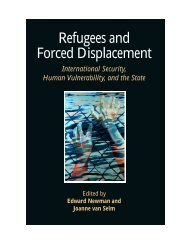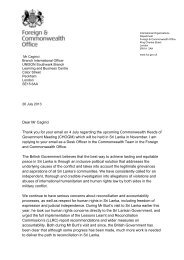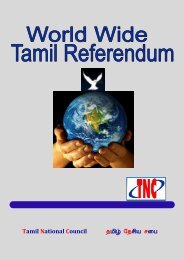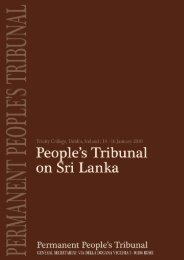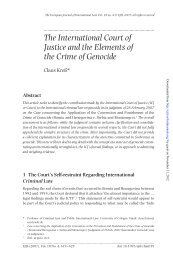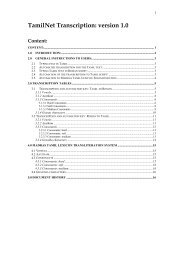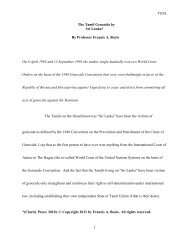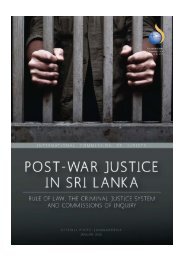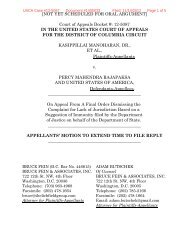Proposal to encode characters for Extended Tamil §1 ... - TamilNet
Proposal to encode characters for Extended Tamil §1 ... - TamilNet
Proposal to encode characters for Extended Tamil §1 ... - TamilNet
You also want an ePaper? Increase the reach of your titles
YUMPU automatically turns print PDFs into web optimized ePapers that Google loves.
§5. The need <strong>to</strong> <strong>encode</strong> <strong>Extended</strong> <strong>Tamil</strong>While as shown above there do exist many variants, <strong>Extended</strong> <strong>Tamil</strong> is essentially one. It isan extension of the <strong>Tamil</strong> script <strong>to</strong> support Sanskrit, as said at the outset. The particularglyphs used <strong>for</strong> the additional <strong>characters</strong> being used with the native <strong>Tamil</strong> <strong>characters</strong> maydiffer. But whether Grantha-style glyphs are used <strong>for</strong> the additional <strong>characters</strong> or diacriticlikemarks are used with native <strong>Tamil</strong> glyphs, the underlying <strong>characters</strong> are the same. I mayliken this <strong>to</strong> the Old Italic and Brahmi situation where (as I am in<strong>for</strong>med) there are many(seriously different) glyphic variants but the Old Italic and Brahmi scripts are <strong>encode</strong>d asone script each. There<strong>for</strong>e <strong>Extended</strong> <strong>Tamil</strong> may be <strong>encode</strong>d as one with the variants beingtaken care of at the font level.It may be asked what is the need <strong>for</strong> encoding <strong>Extended</strong> <strong>Tamil</strong>, when the existingUnicode recommendation is <strong>to</strong> use the <strong>characters</strong> 00B2, 00B3 and 2074. I however believethat that portion of Unicode does not do justice <strong>to</strong> the real complexity behind <strong>Extended</strong><strong>Tamil</strong>. Some reasons are given below:1) That recommendation disables (or at least makes difficult or less-thanelementary)one-<strong>to</strong>-one transliteration by computer of Sanskrit texts fromDevanagari or other Indic scripts <strong>to</strong> <strong>Tamil</strong>.2) It does not consider the anusvara, visarga, avagraha etc at all (or the vowelsvocalic R etc) but only talks about “consonants”. These <strong>characters</strong> are notanalysed by natives (or <strong>to</strong> my knowledge by others) as consonants.3) It does not consider the problem of rendering pointed out by me in page 11of my document L2/10-085 (Feedback <strong>to</strong> Dr Anderson's Grantha Summary). Agood look at the samples <strong>for</strong> ET-C provided hereinbe<strong>for</strong>e will show that theproblem is genuine and cannot be resolved by existing means. (Note that inthose samples it is not only the superscript digits 2, 3 and 4 but also theapostrophe which gets placed between consonants and their vowel signs.)4) It does not even consider the existence of the variant of <strong>Extended</strong> <strong>Tamil</strong>using Grantha-style glyphs <strong>for</strong> the additional <strong>characters</strong>.To maintain the recommendation, and yet address the problem of point 4 above, it may besuggested that after the encoding of the Grantha script, codepoints from the Grantha blockmay be used <strong>to</strong> achieve Grantha-style glyphs, but such a suggestion should be pronounceddead on arrival because it goes against the essence of Unicode. In Unicode one does not usedifferent <strong>characters</strong> <strong>to</strong> handle glyphic variants but different fonts. I have also discussed8




